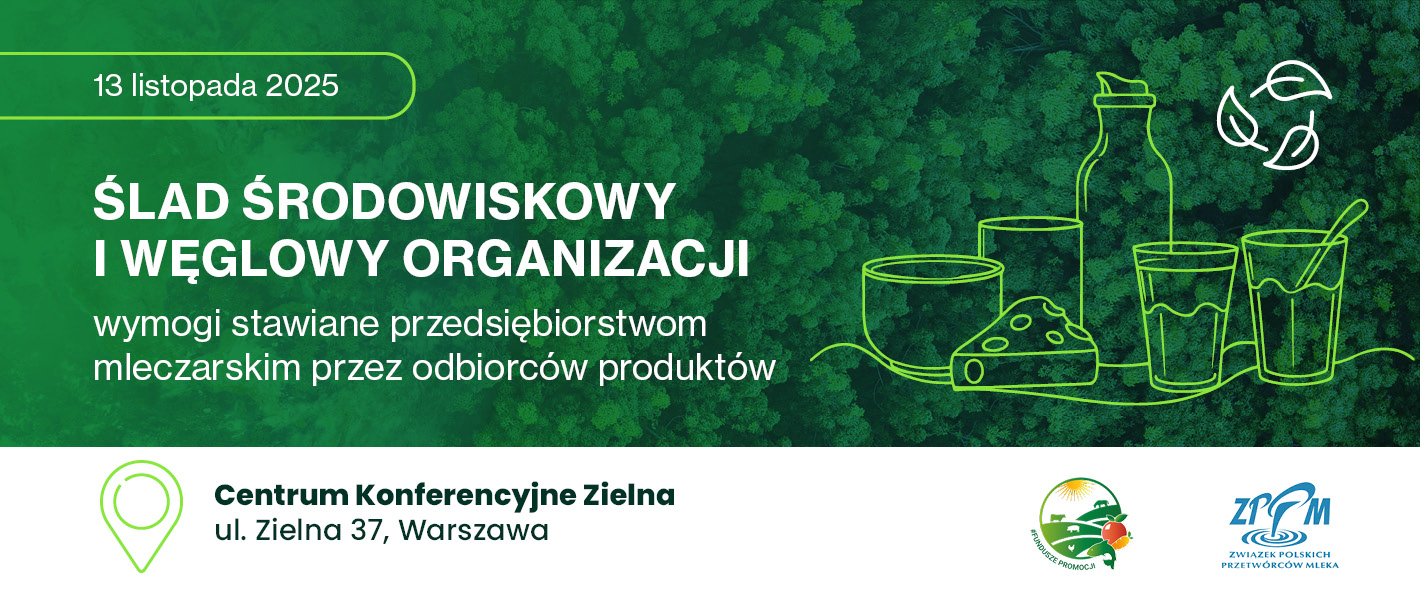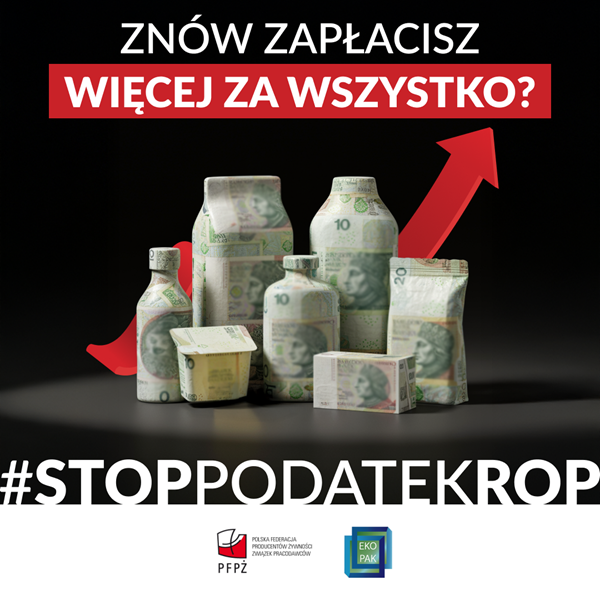ECONOMY
- 6 Food Industry – Development in the Conditions of External Environment Changes -Jadwiga Drożdż, Robert Mroczek (DOI 10.15199/65.2020.8.1)
The main factor in the growth of food industry production was export, supported by growing domestic demand. In the wake of the country’s economic growth, real wages increased, which increased the purchasing power of citizens, and this created greater consumer demand. The situation began to change with the outbrake of the COVID-19 pandemic in early 2020, which paralyzed the functioning of many world economies. The main challenge for companies in the agri-food sector has become: maintaining supply chains, ensuring continuity and security of production (by minimizing the risk of employees being infected with the SARS-CoV-2 virus), searching for new forms and sales channels for products. In the first quarter of 2020, food companies have not yet experienced the negative effects of the COVID-19 pandemic and have generally managed to maintain their economic and financial results at a satisfactory level. The experience gained from the recent global economic and financial crisis of 2008-2009 will help food companies to survive this difficult period.
KEY WORDS: food industry, food, beverages, tobacco products, demand, production, profit
- 14 Changes in the Fruit and Vegetable Processing Sector – Iwona Szczepaniak, Bożena Nosecka (DOI 10.15199/65.2020.8.2)
The article presents changes in production level and foreign trade in fruit and vegetable preserves and their particular groups in 2015-2019. An assessment of the impact of COVID-19 pandemic on the development of production and export of processed fruit and vegetables was also presented. The subject of the assessment was also the position of the Polish fruit- -vegetable industry compared to other European Union countries. The analysis shows that in 2015-2019, the upward trend in the production and foreign trade turnover of almost all preserves was being continued. The balance of foreign trade, including trade with the EU, remained highly positive. The financial results of enterprises were stable and ensured the security of their operations. Poland in terms of the value of production of processed fruits and vegetables was in the fourth place in the European Union. The large scale of adaptation of processing companies to the rules of operation changed in the conditions of the COVID-19 pandemic, government support and overcoming transport restrictions allow us to believe that the scale of the reduction in production, and mainly exports
KEY WORDS: fruit-vegetable industry, production, foreign trade, economic-financial situation, COVID-19 pandemic, Poland, European Union
- 23 Waste Management of The Food Industry in Poland with Particular Emphasis on Fatty Waste – Iwona Szymańska, Maciej Brzeski, Anna Żbikowska (DOI 10.15199/65.2020.8.3)
The article presents the issues of waste management in the food industry in Poland, with particular emphasis on the fat industry. The binding legal regulations concerning the principles of wastes management were described. Using statistical data, the situation of Poland in recent years has been illustrated, also in comparison with other European Union countries. It was found that the lack of a unified methodology for collecting data leads to receive incomplete information and limited analysis of the waste management in the country. Since 2004, Poland has been at the forefront of countries generating the largest total amount of industrial wastes in the entire European Union. This indicator was approx. 50% lower in 2016 as compared to 2004 (Eurostat). In 2010-2018, there was a significant decrease in the amount of food processing wastes by approx. 40% (GUS). Waste in the fat industry is a diversified group, that is classified as hazardous wastes. After proper processing, they can be used as raw materials for the production of technical fats, agricultural biogas, biodiesel, building material fillers, fertilizers, as well as for the synthesis of lipolytic enzymes, as feed additives (even for food products).
KEY WORDS: production residues, economy, environmental protection, food industry, fatty waste
LAW
- 30 New and Updated Obligations of Entrepreneurs in The Field of Environmental Protection (f-gases) – Magdalena Wróbel-Jędrzejewska, Ewelina Włodarczyk, Urszula Stęplewska, Elżbieta Polak (DOI 10.15199/65.2020.8.4)
The reporting obligations in the field of environmental protection imposed on companies in the field of f-gases are presented in the article. The functioning of the Database of Report (BDS) and the Central Register of Operators (CRO) as well as new functions in the waste Database on products, packaging and waste management (BDO) introduced from January 2020 are characterized. The inspections of Provincial Inspectorate of Environmental Protection (VIEP) and Office of Technical Inspection (UDT) are discussed. The most frequent infringements identified after VIEP inspections are indicated. The consequences of failure to comply with the required f-gas obligations are described in detail.
KEY WORDS: f-gases, report database, Central Register of Operators, waste database, inspections (UDT, VIEP)
TECHNICS – TECHNOLOGY
- 38 The Application of Dehumidified Air in The Process of Food Drying – Aleksandra Matys, Alicja Barańska, Dorota Witrowa-Rajchert, Katarzyna Samborska (DOI 10.15199/65.2020.8.5)
This article presents the achievements to date in the application of the air of reduced humidity as a drying medium in convective, fluid bed and spray drying. The reduction of the drying air humidity, performed as a preliminary operation before the actual drying process, may take place in an open cycle (in a condensation or adsorption dehumidifier) or closed cycle (with heat pump). Due to the greater driving force of the drying process, this treatment allows the drying temperature to be decreased. This is an important factor leading to a reduced degradation of thermolabile components, limiting the addition of drying carriers and increasing the efficiency of the drying process.
KEY WORDS: dehumidified air, convective drying, fluid bed drying, spray drying
FOOD – FEEDING
- 43 Egg Alternatives – Adonis Hilal, Anna Florowska, Zuzanna Milewska (DOI 10.15199/65.2020.8.6)
The growing interest of both producers and consumers in plant replacements for hen’s egg is driven by many factors. The popularity of the vegan products, the need to reduce the number of allergens in food, consumer concern about the microbiological safety of eggs, the desire to improve the quality of the diet through the consumption of products with increased nutritional value or a reduced amount of unfavorable nutrients, lower prices of raw materials and the pursuit of more environmentally sustainable food production are among the most important factors. The most commonly used ingredients in vegetable egg replacers are vegetable proteins, polysaccharides, fiber, lecithin, flavor and color additives, and multicomponent mixtures containing the above ingredients in appropriate proportions. Although some substances have many properties that allow them to replace eggs in food products, none of them can replace all of egg’s properties. Therefore, the egg replacers available on the market are produced as mixtures with the optimal composition of vegetable protein and polysaccharides, ensuring that their properties are adapted to the needs of the specific product in which they will be used.
KEY WORDS: replacement, eggs, plant-based alternative
- 48 Effect of The Type of Cooking of Cabbage Vegetables on The Content of Dietary Fibre – Karolina Nowak, Agnieszka Filipiak-Florkiewicz (DOI 10.15199/65.2020.8.7)
The research was carried out to illustrate the changes in the content of dietary fiber in cruciferous vegetables under thermal treatment. The research material was steamed or conventionally boiled broccoli and cauliflower. On the basis of the obtained results, it was found that both method of thermal treatment as well as kind of vegetable, significantly influence on the content of total dietary fiber and its fractions in the tested vegetables. Boiled broccoli was characterized by a greater reduction in the content of total dietary fiber compared to cauliflower, i.e. from 4.96 g/100 g of fresh product to 4.32 g/100 g of boiled product. Raw vegetables contained mainly the soluble dietary fiber (SDF), with a small share of the insoluble dietary fiber (IDF). During the thermal treatment, the amount of SDF decreased, while IDF increased. The greatest differences were observed between raw and steamed broccoli. The content of the IDF fraction in the raw broccoli was 0.32 g/100 g, while after the steaming process this value increased to 1.55 g /100 g.
KEY WORDS: cruciferous, vegetables, thermal treatment, dietary fiber
- 52 Hazard Assessment of Heavy Metals in Food Products – Jagoda Kępińska, Wioletta Biel (DOI 10.15199/65.2020.8.8)
Addition to nutrients, food also contains substances that can pose health risk. Heavy metals are one such threat. These impurities should be classified as chemical contamination resulting from various natural, processing and migration processes as well as accidental contamination. Heavy metals are currently one of the most dangerous environmental pollutants. The most toxic include cadmium, lead, mercury and arsenic. These elements have the highest accumulation coefficient. The article presents results of heavy metal content in some basic food products (vegetables and fruits, products of animal origin – milk, meat, fish). Additionally, based on RASFF reports, an analysis of the occurrence of chemical hazards in food was made taking into account trends and the frequency of reporting them in the analyzed period. KEY WORDS: arsenic, cadmium, lead, mercury, threats, food
LOGISTIC-PACKAGING
- 58 How to Solve the Problem of Plastics? – Bohdan Achremowicz, Piotr Tomasik (DOI 10.15199/65.2020.8.9)
The first plastic celluloid was patented in 1870. Its widespread use has resulted in further work on polymers. Synthetic rubber, bakelite, polystyrene, polyamides and Teflon were developed, then ethylene and propylene. The world production and widespread use has become a threat to the environment, especially due to the waste that it generates. Food packaging waste has become widespread. The possibility of eliminating these threats is seen in the production of biodegradable materials, that can replace plastics. A number of such materials have been developed for versatile use. This can be an important direction of environmental protection against total pollution with difficult plastic waste.
KEY WORDS: plastics, environmental pollution, biodegradable plastics
EVENTS
- 13 Bio-insurance – a standard and a link in the chain of fighting against ASF
- 27 Consumer concerns and the potential of digital security
- 34 The apple is in the lead, followed by the tomato and the carrot
- 42 Third place in the „Innovation Prizes” (EIT Food) competition!
- 56 Poland – the largest orchard in Europe!
- 63 The European Commission registered a new geographical indication from Poland
- 63 Bio couloring foodstuff




